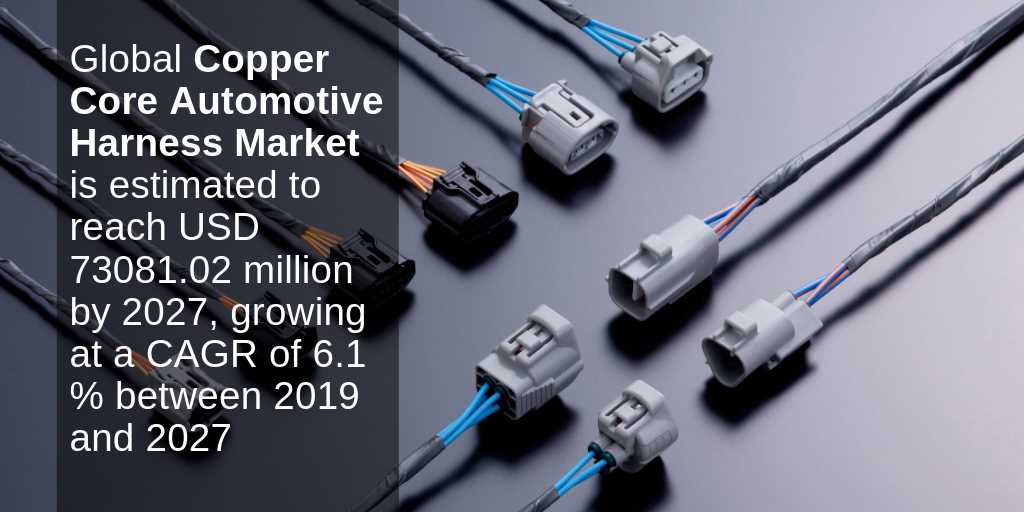
In the modern automotive industry, a wiring harness is an essential component that facilitates the transmission of electrical power and signals between various parts of a vehicle. A wiring harness consists of a collection of electrical wires, connectors, and terminals, which are organized and bundled together to form a unified system. This system ensures the proper functioning of various electrical components in a car, such as lights, ignition system, audio system, and sensors. Different types of wiring harnesses are used in cars, depending on their specific applications and requirements.
One of the most common types of wiring harnesses found in cars is the engine harness. As the name suggests, the engine harness is responsible for connecting and supplying power to various electrical components of the engine, such as the fuel injectors, ignition coil, sensors, and the engine control unit (ECU). The engine harness is designed to be highly durable and resistant to heat, as it is located in the engine bay and is exposed to high temperatures and vibrations.
Another type of wiring harness commonly found in cars is the body harness. The body harness is responsible for connecting and supplying power to electrical components located in the vehicle’s body, such as the lights, power windows, central locking system, and the dashboard instruments. The body harness is designed to be flexible and able to withstand the constant movement and vibrations of the vehicle’s body.
Furthermore, there are specialized wiring harnesses used for specific purposes in cars. For example, the audio harness is used to connect the car’s audio system, including the radio, speakers, and amplifier. The sensor harness is used to connect various sensors in the car, such as the oxygen sensor, temperature sensor, and speed sensor, to the ECU. The trailer harness is used to connect the electrical system of a trailer to the car, allowing it to be powered and controlled by the car’s electrical system.
In conclusion, wiring harnesses are a crucial component in a car, enabling the transmission of electrical power and signals between various parts of the vehicle. Depending on their specific applications, different types of wiring harnesses are used in cars, such as the engine harness, body harness, audio harness, sensor harness, and trailer harness. Each of these harnesses is designed to meet the specific requirements of their respective applications, ensuring the proper functioning of the car’s electrical system.
Types of Wiring Harness in Car
A wiring harness is an essential component of a car’s electrical system. It is responsible for connecting various electrical devices, such as lights, sensors, and switches, to the car’s main power source. There are several types of wiring harnesses used in cars, each serving a specific purpose and designed to meet the requirements of different automobile systems.
1. Engine Wiring Harness
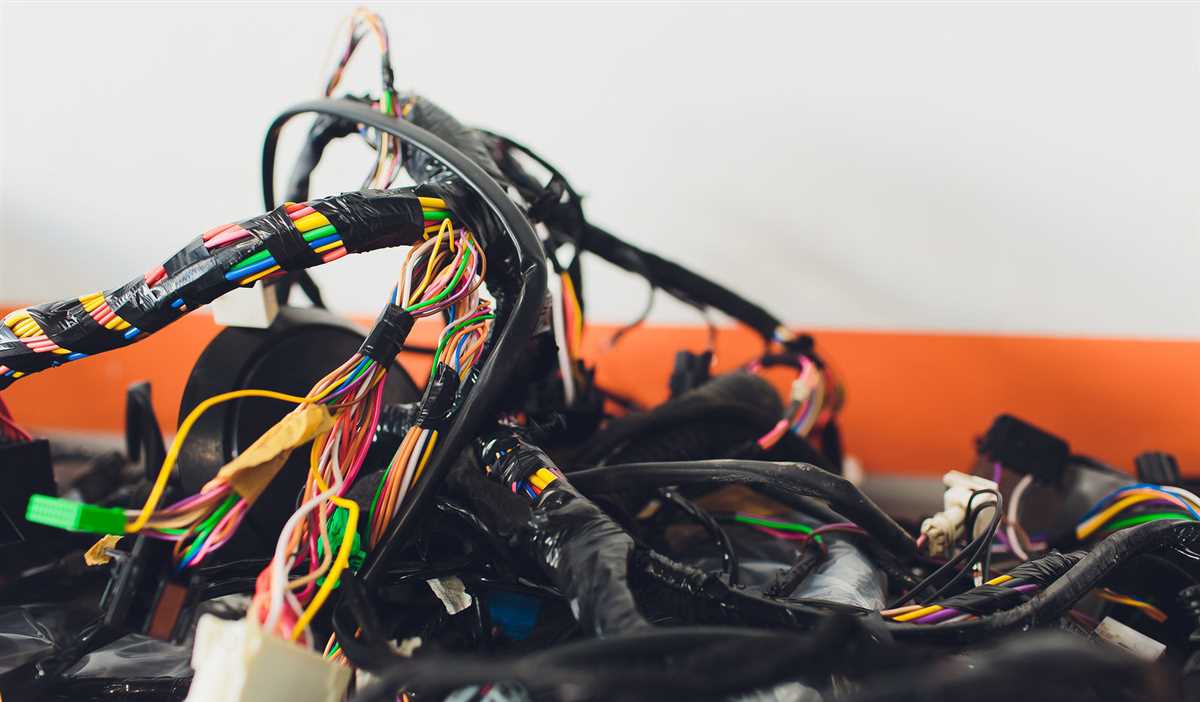
The engine wiring harness is one of the most important wiring harnesses in a car. It connects all the electrical components of the engine, including the ignition system, fuel injectors, sensors, and the engine control unit (ECU). The engine wiring harness ensures proper communication between these components, allowing the engine to operate smoothly.
2. Body Wiring Harness
The body wiring harness is responsible for connecting electrical devices and systems inside the car’s body, such as the lights, power windows, central locking system, and audio system. It ensures that power is distributed properly to these devices, allowing them to function correctly. The body wiring harness also includes connectors and wires for the car’s safety systems, such as the airbags and seatbelt pre-tensioners.
3. Chassis Wiring Harness
The chassis wiring harness connects various electrical components of the car’s chassis, such as the ABS system, traction control system, and suspension system. It allows these systems to communicate with each other and with the car’s main power source. The chassis wiring harness also includes connectors and wires for the car’s instrument cluster, dashboard controls, and other electronic components.
4. Transmission Wiring Harness
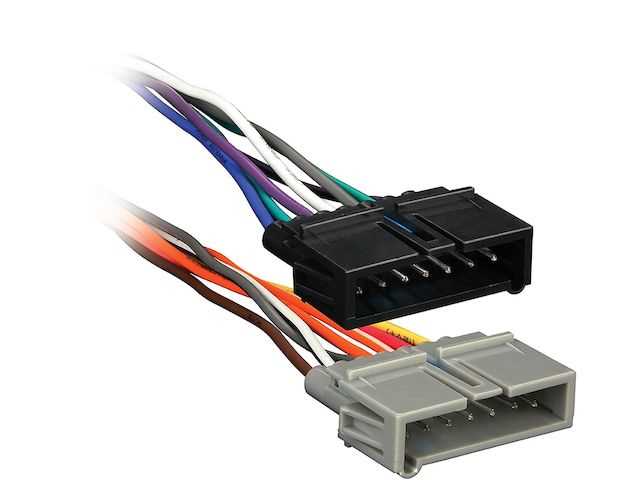
The transmission wiring harness is specific to cars with automatic transmissions. It connects the transmission control module to the various sensors and solenoids in the transmission, allowing for precise control of shifting and other transmission functions. The transmission wiring harness also includes connectors and wires for the car’s gear selector mechanism and indicator lights.
5. Trailer Wiring Harness
In addition to the main wiring harnesses mentioned above, some cars also have a trailer wiring harness. This harness is used to connect electrical devices on a trailer, such as the lights and brakes, to the car’s electrical system. It ensures that the trailer’s electrical functions work properly and are synchronized with the car’s signals.
In conclusion, there are several types of wiring harnesses used in cars, each serving a specific purpose and designed to meet the requirements of different automobile systems. These harnesses ensure proper communication and distribution of power among the car’s electrical components, allowing for the smooth operation of various systems and devices.
Primary Wiring Harness
A primary wiring harness is an essential component of a car’s electrical system. It is a bundle of wires that connects various electrical components, such as the battery, alternator, starter motor, ignition coil, and various sensors, to the main electrical panel. The primary wiring harness acts as the backbone of the car’s electrical system, providing power and communication between different components.
The primary wiring harness is typically made up of multiple individual wires, each with a specific function. These wires are strategically routed throughout the car’s body, ensuring that they are protected from damage and interference. They are often bundled together and secured using wire looms or plastic tubing to provide additional protection and organization.
The primary wiring harness is designed to handle the various electrical loads and voltages required by the car’s electrical system. It is also insulated to prevent short circuits and electrical shocks. The wires within the harness are color-coded to make it easier for technicians to identify and troubleshoot any issues that may arise.
The primary wiring harness is typically connected to the car’s electrical system using connectors or terminals. These connectors allow for easy installation and removal of components, as well as facilitating the troubleshooting process. The quality and durability of the connectors used in the primary wiring harness are crucial to ensuring a reliable electrical connection and preventing potential electrical failures.
In conclusion, the primary wiring harness plays a vital role in the car’s electrical system. It provides power and communication between various components, ensuring that the car functions properly. Proper installation, maintenance, and the use of high-quality components are essential to ensuring the reliability and safety of the primary wiring harness.
Dash Harness
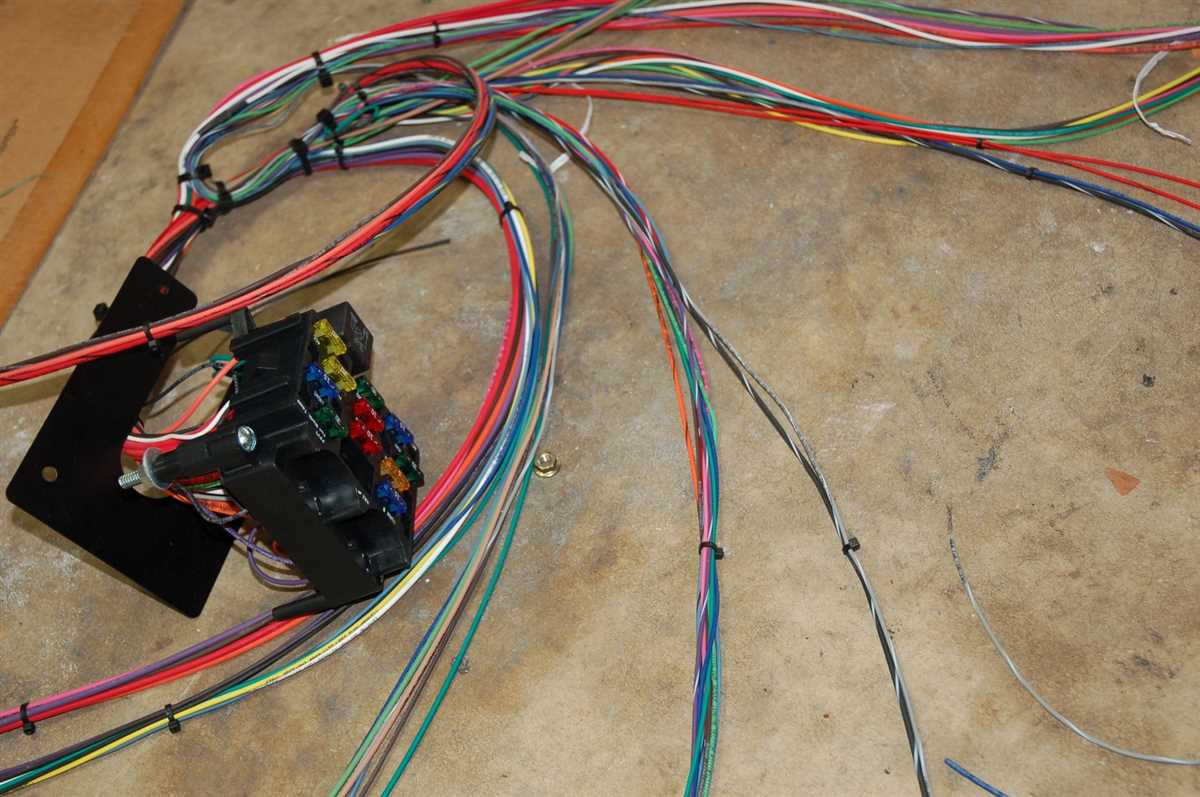
The dash harness is an essential component of a car’s electrical system. It is responsible for connecting various electrical components and controls located on or near the dashboard. The dash harness is designed to deliver power, signals, and ground connections between the different devices, ensuring proper communication and operation.
One of the key features of the dash harness is its ability to organize and route the wiring in a neat and efficient manner. It is usually made up of multiple wires, connectors, and junction blocks that are carefully organized to prevent tangling and facilitate easy troubleshooting and maintenance. The harness is typically designed specifically for a particular car model, ensuring compatibility and seamless integration with the vehicle’s electrical system.
The dash harness is connected to various components and controls located on or near the dashboard, including the instrument cluster, HVAC controls, audio system, steering wheel controls, and various switches. It also connects to sensors and modules that monitor and control various aspects of the vehicle, such as the airbag system, ABS system, and engine management system.
The dash harness plays a crucial role in maintaining the functionality and safety of the car’s electrical system. It ensures that all the electrical components and controls on the dashboard receive the necessary power and signals for proper operation. A faulty or damaged dash harness can result in malfunctioning controls, intermittent power loss, or even electrical shorts, which can be potentially dangerous.
Engine Wiring Harness
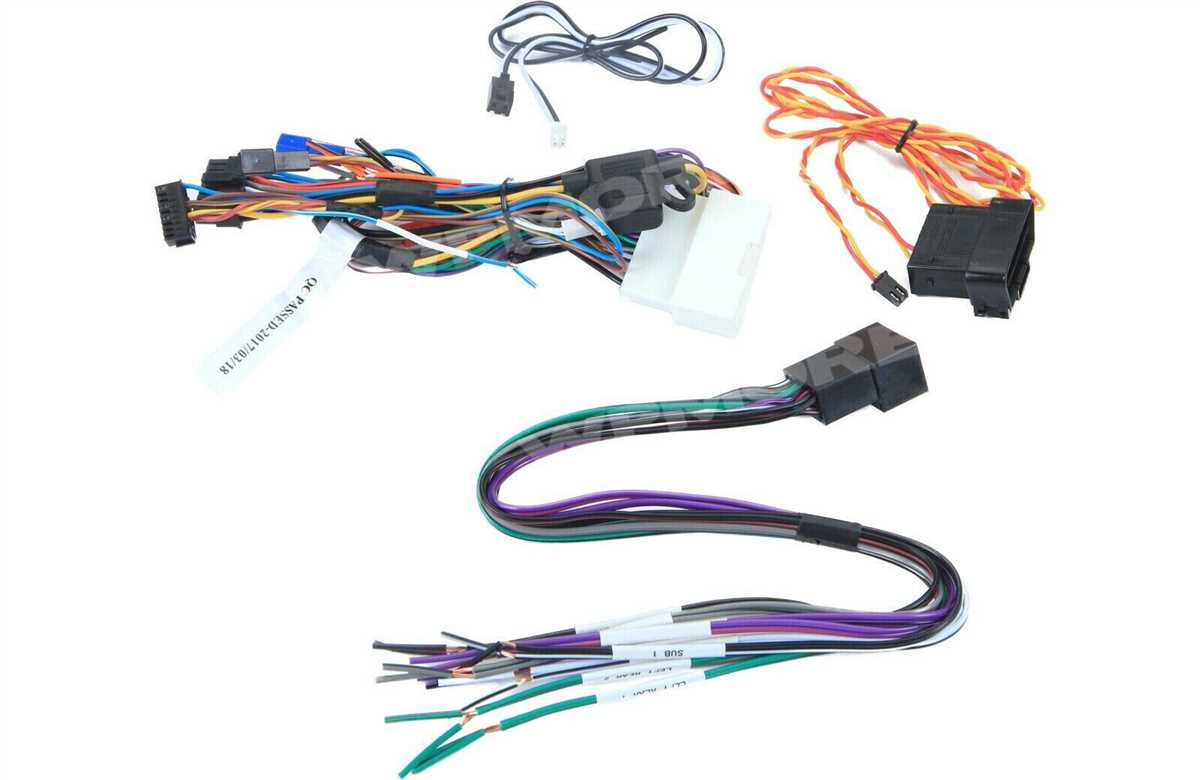
One of the essential components of a car, the engine wiring harness serves as the central nervous system of the vehicle’s electrical system. It is responsible for connecting all the electrical components of the engine, such as the ignition system, fuel injector, sensors, and the powertrain control module, ensuring that they communicate and function properly.
The engine wiring harness consists of a network of wires, connectors, and terminals meticulously designed to handle the high-voltage and high-temperature environment inside the engine bay. These wires are typically made of copper or aluminum, which are excellent conductors of electricity. The harness is also wrapped in a protective insulating material, such as heat-resistant plastic or tape, to prevent any damage or short circuits from occurring.
Key Features:
- Connectivity: The engine wiring harness must provide a secure and reliable connection between the engine components to ensure smooth operation. It is designed with specific connectors and terminals that match the electrical requirements of each component.
- Compatibility: Engine wiring harnesses are designed to be compatible with a specific make and model of vehicle. They are tailored to fit the engine’s layout and ensure proper connection with all the necessary components.
- Protection: The wiring harness is designed to withstand harsh conditions, such as high temperatures, oil, and vibrations. It is built to provide protection and prevent damage to the wires, ensuring consistent performance and longevity.
Overall, the engine wiring harness is a critical component of a car’s electrical system, allowing for efficient communication and operation of the engine’s vital components. A well-designed and properly functioning harness is crucial for the overall performance and reliability of the vehicle.
Body Wiring Harness
The body wiring harness is a crucial component of a car’s electrical system. It is responsible for connecting all of the electrical components located in the vehicle’s body, such as the lights, power windows, and central locking system, to the main power source and control unit.
One of the main functions of the body wiring harness is to provide power and communication signals to the various electrical components in the car’s body. This ensures that all of the components can function properly and communicate with each other. Additionally, the body wiring harness also helps to protect the electrical wires from damage and ensure that they are properly insulated.
The body wiring harness is typically made up of multiple individual wires that are bundled together and wrapped in a protective covering. These wires are color-coded to indicate their specific function and are usually labeled for easier identification during installation and troubleshooting.
In some cases, the body wiring harness may also include connectors or terminals that allow for easy connection and disconnection of the electrical components. This makes it more convenient for technicians to repair or replace faulty components, as they can simply unplug the old component and plug in a new one without having to modify the wiring harness itself.
In conclusion, the body wiring harness plays a vital role in ensuring the proper functioning of the electrical components in a car’s body. It provides power and communication signals, protects the wires from damage, and allows for easy connection and disconnection of components. Without a properly functioning body wiring harness, many essential functions of a car may not work correctly.
Powertrain Control Module Wiring Harness
The powertrain control module (PCM) wiring harness is a vital component of the car’s electrical system that connects the PCM to various sensors and actuators throughout the vehicle. It serves as the communication link between the PCM, which regulates the engine’s performance, and the different systems it controls. This wiring harness plays a critical role in ensuring the proper functioning and coordination of the engine, transmission, and other powertrain components.
The PCM wiring harness is designed to carry electrical signals and power supply to the PCM and transmit data from the various sensors and actuators back to the PCM. It consists of numerous wires, connectors, and sensors that are carefully organized and bundled together to minimize the risk of interference or signal loss. The wires in the harness are typically color-coded and labeled to make installation and troubleshooting easier.
One of the main functions of the PCM wiring harness is to provide the necessary inputs to the PCM for proper engine control. It connects sensors such as the throttle position sensor, crankshaft position sensor, oxygen sensors, and engine temperature sensors to the PCM. These sensors gather data about various parameters and send it to the PCM through the wiring harness. The PCM then processes this information and adjusts the engine’s performance accordingly.
In addition to sensor inputs, the PCM wiring harness also connects to various actuators such as fuel injectors, ignition coils, and the idle air control valve. It carries the necessary signals from the PCM to these actuators, allowing the PCM to control their operation and optimize the engine’s performance. This includes controlling fuel flow, ignition timing, and air/fuel mixture to ensure efficient combustion.
Overall, the powertrain control module wiring harness is a critical component of the car’s electrical system that facilitates the communication between the PCM and other powertrain components. It allows the PCM to monitor and control the engine’s performance by providing data from various sensors and sending signals to actuators. Proper installation and maintenance of the PCM wiring harness are essential to ensure reliable engine operation.
Door Harness
The door harness is an integral part of a car’s electrical system. It consists of a series of wires that connect the various components in the door, such as the window motor, door lock actuator, and speakers, to the main wiring harness in the vehicle. The door harness is designed to withstand the constant movement and flexing that occurs when the door is opened and closed.
One of the main functions of the door harness is to provide power and communication to the components in the door. For example, when the driver presses the power window switch, the door harness sends the electrical signal to the window motor, causing it to move the window up or down. Similarly, when the driver locks or unlocks the doors using the key fob or door lock button, the door harness activates the door lock actuators to secure or unlock the doors.
Overall, the door harness plays a crucial role in ensuring the proper functioning of the components in the door. Without a properly functioning door harness, the window motor may not work, the door lock may not operate, and the speakers may not produce sound. It is important to regularly inspect and maintain the door harness to prevent any electrical issues and ensure the safety and convenience of the vehicle occupants.